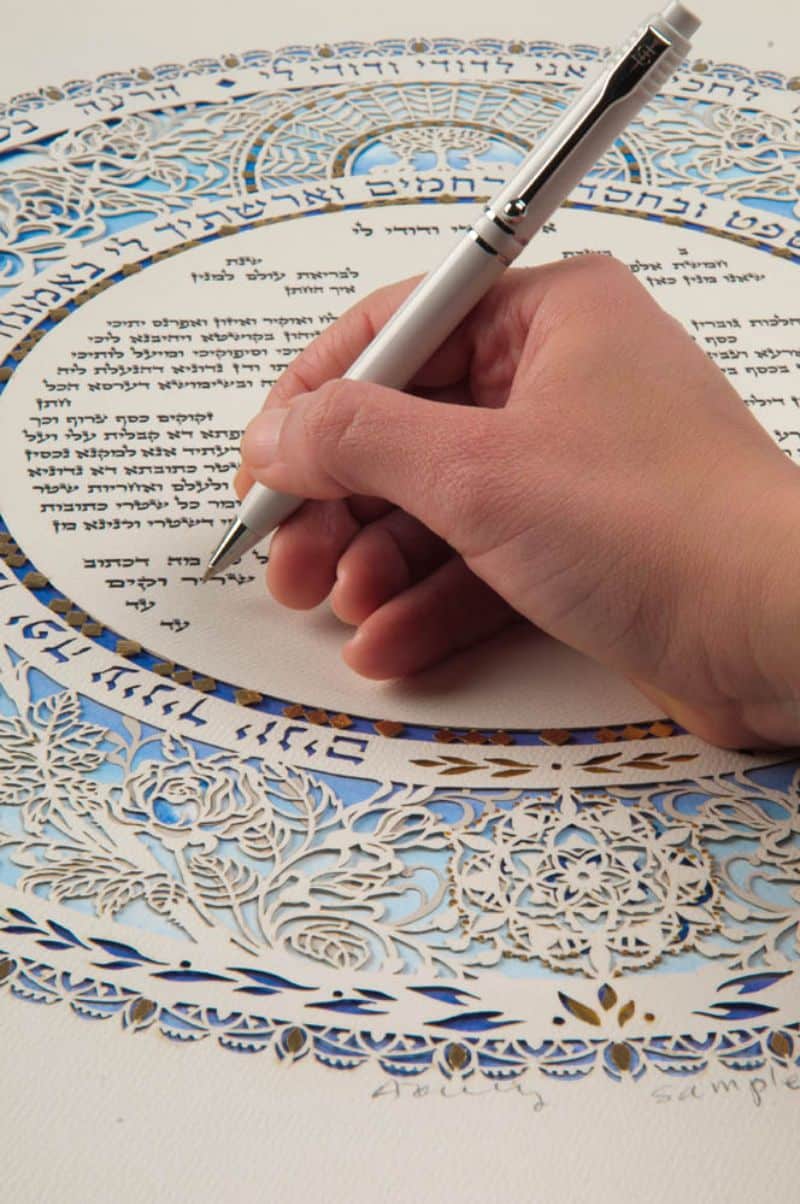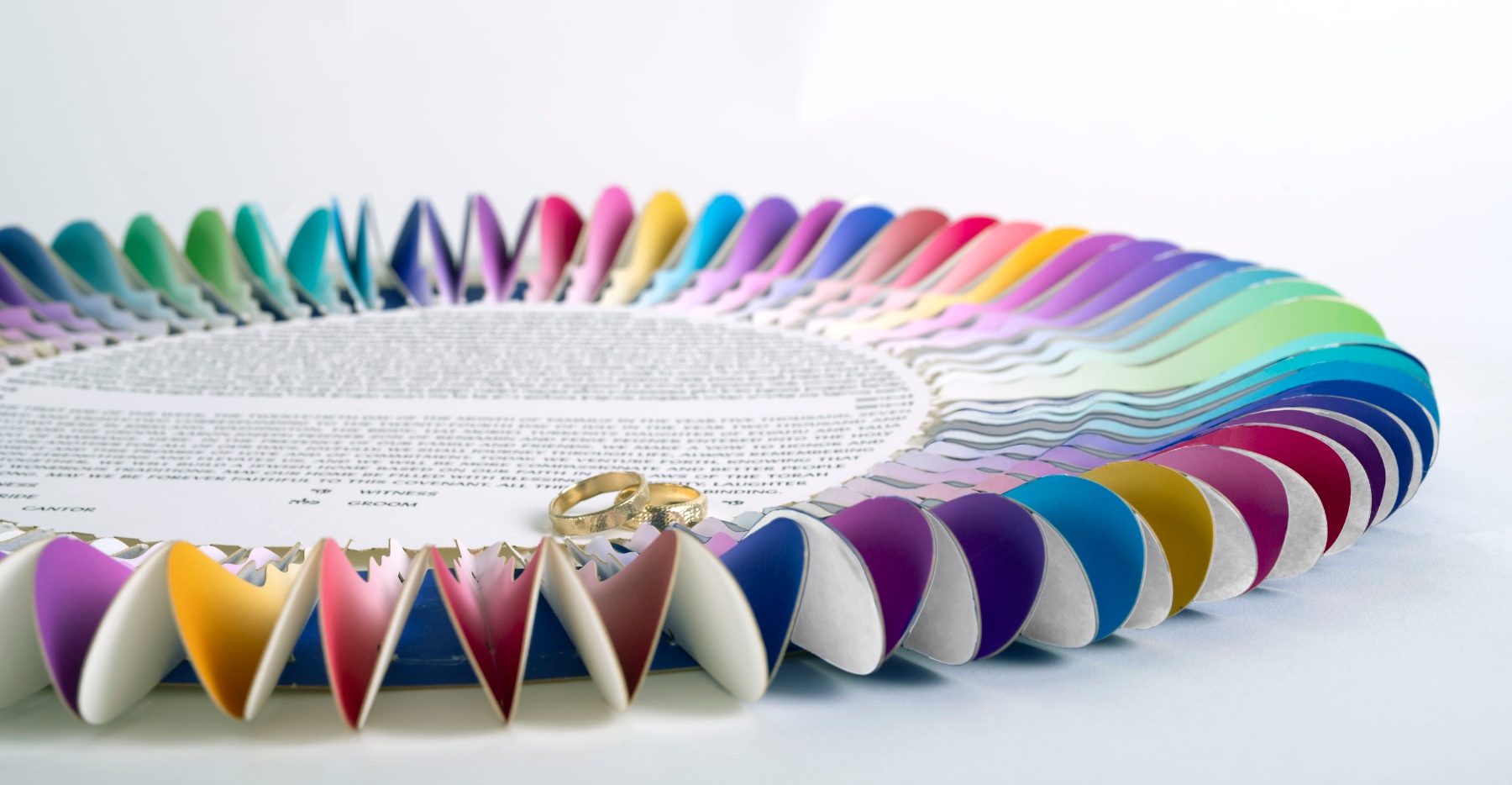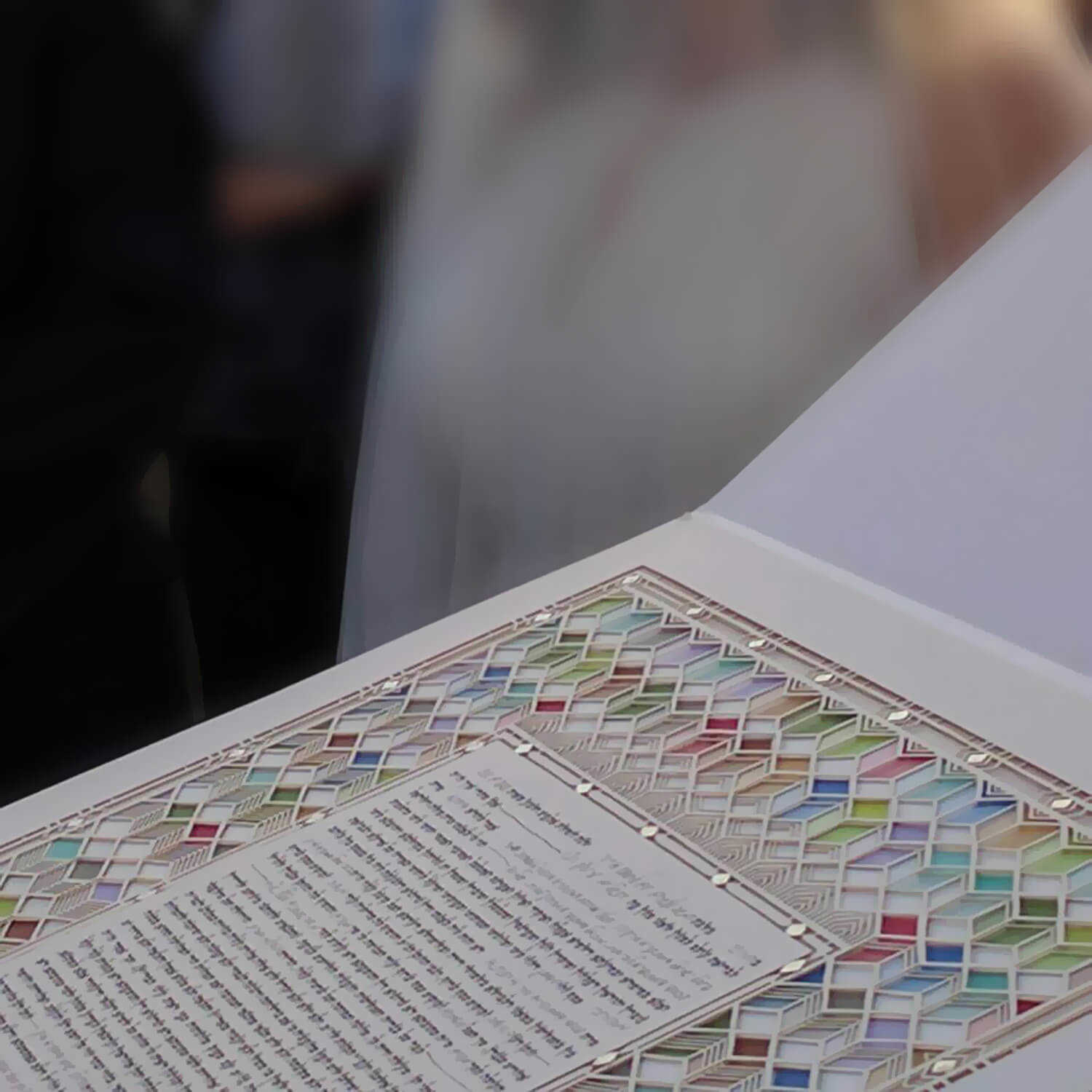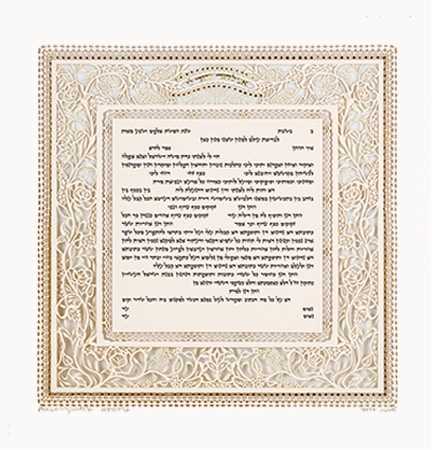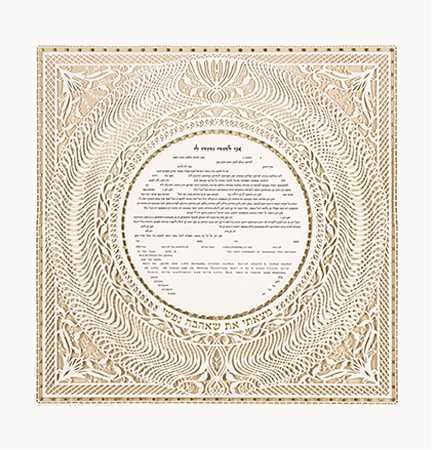The Origins of the Ketubah: Tracing Its Roots in Jewish Law and Tradition

The Ketubah, a Jewish marriage contract, is so much more than just a legal document. It’s a cherished part of Jewish weddings, woven deeply into the fabric of Jewish tradition and community. For centuries, this binding document has been a way to outline the financial obligations and conjugal rights of a husband, offering protection and security to the Jewish wife. But beyond its practical purpose—ensuring a wife’s economic welfare in the case of divorce or a husband’s death—the Ketubah is a powerful symbol of love, commitment, and mutual respect between Jewish couples.
To truly grasp the importance of the Ketubah, we need to go back to its roots in ancient times, exploring its development from Biblical days through the centuries. Originally, it began as a simple agreement between families, but over time it evolved into a formalized contract under Talmudic law. It also became a piece of art, with designs and texts that reflect the diverse cultures and histories of Jewish communities around the world. Today, the Ketubah remains a vital part of Jewish wedding ceremonies, blending tradition with contemporary values.
In this article, we’ll journey through the history of the Ketubah, uncovering how it has adapted to meet the needs of Jewish couples across generations. We’ll see how this timeless document has grown from a straightforward marriage contract into a personalized and meaningful expression of love and partnership, continuing to play a central role in Jewish life today.
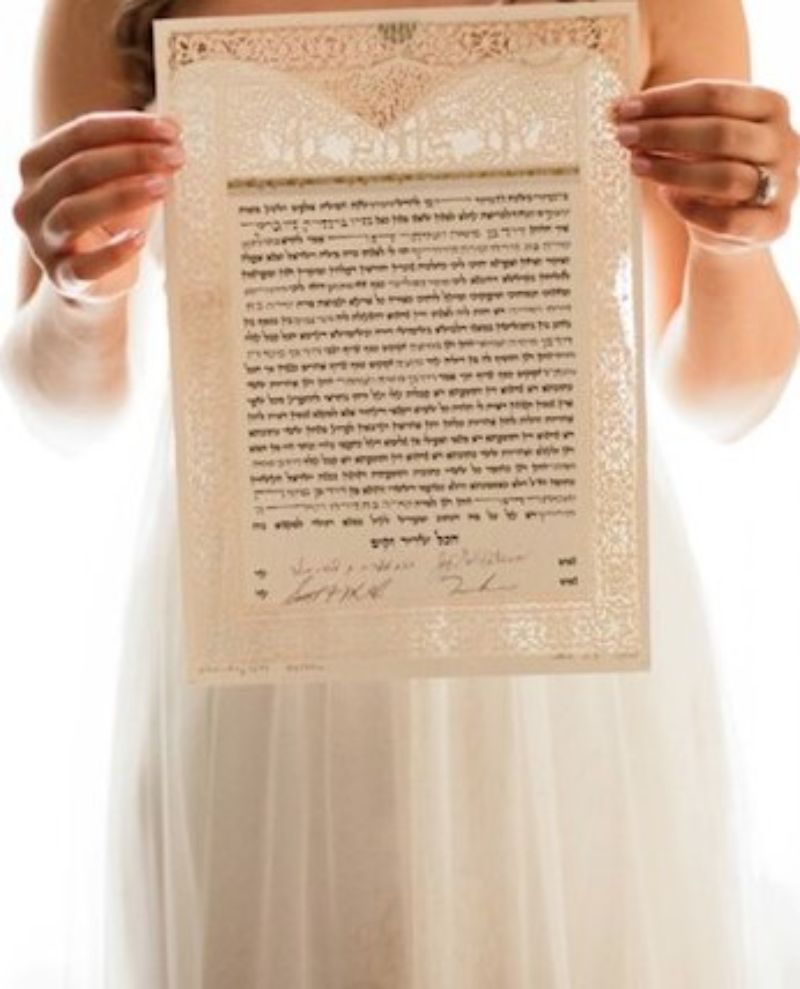
The Ancient Beginnings of the Ketubah
The story of the Ketubah begins in ancient times, long before it became the formalized document we recognize today. In those early days, marriage in Jewish society was primarily a private agreement between two families, often involving negotiations over financial arrangements like dowries and gifts. These agreements were crucial for ensuring that both families were satisfied with the terms of the union, particularly when it came to the economic welfare of the bride.
As Jewish communities grew and evolved, there emerged a need to formalize these private agreements into something more binding and protective—especially for the Jewish wife. The Ketubah stepped in to fill this role, becoming more than just a basic marriage contract. It was designed as a legal document that would safeguard the wife’s financial security, particularly in cases of divorce or the husband’s death. This shift marked a significant evolution in how Jewish marriages were structured, emphasizing the need for a document that clearly outlined the husband’s financial obligations and provided protection against the loss of income for the Jewish bride.
During this period, the Ketubah also began to take on a broader role within the Jewish community. No longer was it simply a private arrangement between families; it became a public declaration of the husband’s responsibilities to his wife, reflecting the community’s values and the importance of protecting women’s rights. By formalizing these obligations in a written document, the Ketubah helped to establish a more balanced power dynamic within the marriage, offering a measure of security that was rare in other ancient societies.
As the Ketubah continued to evolve, it started to include more detailed provisions that addressed specific concerns, such as additional clauses related to inheritance and financial support. These early developments laid the groundwork for what would eventually become a key element of Jewish wedding ceremonies, representing not just a legal contract, but a profound statement of commitment and respect.
The Development of the Ketubah in Talmudic Law
The formalization of the Ketubah as a key component of Jewish marriage is closely tied to the development of Talmudic law. The Talmud, a central text of Rabbinic Judaism, provides extensive guidance on marriage, divorce, and the responsibilities of spouses. It is within this framework that the Ketubah was transformed from a basic agreement into a structured legal document essential to the Jewish wedding ceremony.
One of the most significant contributions of Talmudic law to the Ketubah was the establishment of specific financial obligations for the husband. These obligations included a guaranteed sum of money—often silver pieces—to be paid to the wife in the event of divorce or the husband’s death. Additionally, the Ketubah outlined conjugal rights and marital obligations, ensuring that the husband was legally bound to provide for his wife’s needs, both materially and emotionally. This legal formality was crucial in a society where Jewish women often lacked independent financial means and needed protection against economic insecurity.
Beyond just financial clauses, the Talmud also encouraged the inclusion of an additional clause in the Ketubah, which could address various concerns, such as the care of children or provisions for the wife’s continued support. This flexibility allowed for the customization of Ketubah texts to suit the specific needs and circumstances of each marriage, making it a living document that could adapt to the realities of Jewish life across different times and places.
The Ketubah’s role in Jewish marriage wasn’t just about economic protection; it also carried significant symbolic weight. Signing the Ketubah became a vital part of the Jewish wedding ceremony, a moment when the bridal couple publicly affirmed their commitments to one another. This public declaration served not only as a legal binding agreement but also as a moral and communal affirmation of the marriage’s sanctity and the couple’s mutual responsibilities.
By solidifying the husband’s financial obligations and setting a standard for fair treatment, the Ketubah helped to elevate the status of married women within the Jewish community. It provided a safeguard against abandonment and financial hardship, reflecting a progressive approach to women’s rights that was advanced for its time. Through these legal protections, the Ketubah played a crucial role in shaping the dynamics of Jewish marriage, ensuring that both partners entered into the union with clear expectations and mutual respect.
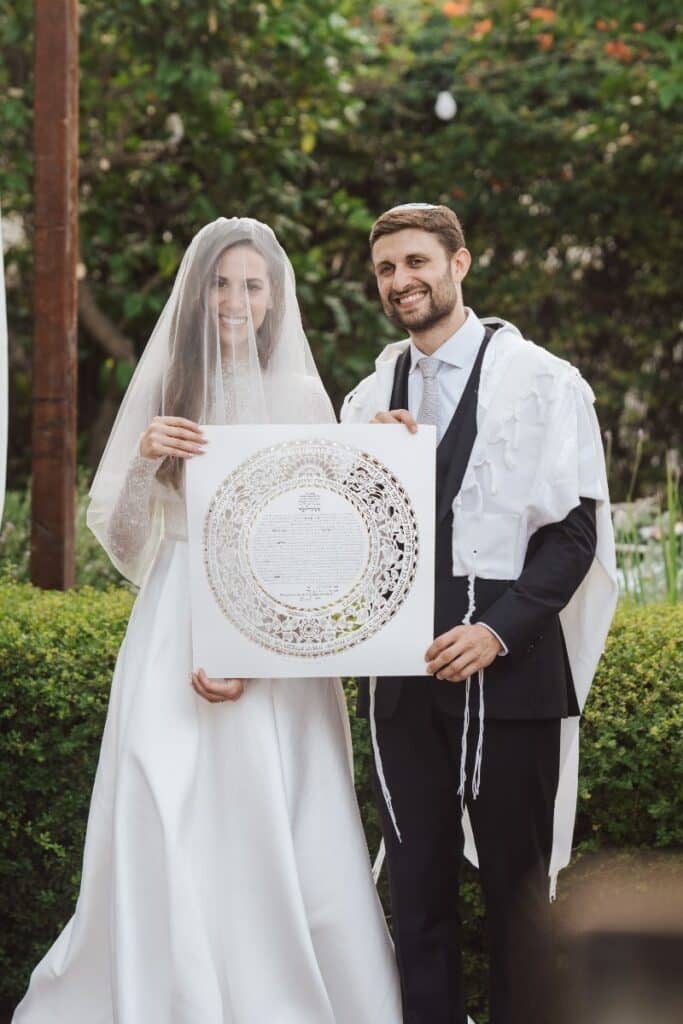
The Influence of the Ketubah on Women’s Rights
The Ketubah played a pivotal role in advancing women’s rights within Jewish marriage, offering protections that were progressive for their time. By establishing the husband’s financial obligations in a binding document, the Ketubah ensured that Jewish women were not left vulnerable in cases of divorce or the husband’s death. This legal document was more than just a formality; it was a crucial safeguard for a Jewish wife, providing her with a measure of economic security and protection against potential hardship.
In traditional communities, the Ketubah served as a powerful tool to balance the power dynamics within marriage. By clearly outlining the financial responsibilities of the husband, it helped prevent scenarios where a wife could be abandoned without support. This was particularly important in ancient and Biblical times when women often lacked their own economic resources and could easily be left destitute. The Ketubah, therefore, acted as a shield, ensuring that married women retained certain rights and were not subjected to unjust treatment.
Moreover, the Ketubah had significant symbolic importance in the Jewish wedding ceremony. The act of signing the Ketubah was a public declaration of the husband’s commitment to his wife, emphasizing his role in providing for her well-being and honoring their mutual marital obligations. This public affirmation was more than a legal necessity; it was a statement of respect and partnership, reinforcing the idea that marriage was a union built on trust and mutual responsibility.
The inclusion of additional clauses in many Ketubahs also reflected a growing awareness of the diverse needs within marriage. These clauses could specify various conditions, such as provisions for children or additional financial support, adapting to the unique circumstances of each couple. This flexibility made the Ketubah a living document, one that could evolve with the needs of Jewish couples over time.
In modern times, the principles established by the Ketubah continue to resonate. While the specific language and provisions have evolved to reflect contemporary values, the core idea of protecting women’s rights within marriage remains central. For many Jewish couples today, the Ketubah is not only a legal document but also a meaningful expression of equality and partnership, ensuring that both partners enter the marriage with shared commitments and mutual respect.
The Evolution of Ketubah Texts and Design
As the Ketubah became a staple in Jewish marriages, both its text and design evolved to reflect changing social norms and cultural influences. Initially, Ketubahs were simple documents written in Aramaic, detailing only the basic legal provisions required by Talmudic law, such as the husband’s financial obligations and marital duties.
Over time, as Jewish communities grew more diverse, the Ketubah text became more elaborate, incorporating additional clauses to address specific family needs, like inheritance rights or special financial arrangements. This flexibility allowed each Ketubah to become a customized document, tailored to the unique circumstances of the marriage.
Alongside these textual changes, the design of the Ketubah also transformed. What began as a straightforward legal document evolved into a piece of art, often beautifully decorated with intricate calligraphy, vibrant illustrations, and ornamental borders. By the medieval period, Ketubahs were not only seen as legal contracts but also as significant cultural artifacts that reflected the artistic traditions of the Jewish community. Italian ketubot, for example, were adorned with Renaissance-style artwork, while Sephardic ketubot featured geometric patterns and Arabic calligraphy.
Today, the tradition of crafting beautiful, personalized Ketubahs continues. Many couples opt for custom designs that reflect their personal tastes and cultural heritage, blending modern styles with traditional elements. This ongoing evolution of Ketubah design underscores its enduring role as both a legal document and a meaningful piece of art in Jewish life.

Regional Variations and Cultural Influences
As Jewish communities spread across different regions, the Ketubah adapted to local customs, resulting in a wide array of regional variations in both text and design. These adaptations reflect the diverse cultural and legal environments in which Jewish people lived, making the Ketubah a dynamic document that could accommodate various traditions and practices.
In Sephardic Jewish communities—those with roots in Spain, North Africa, and the Middle East—Ketubahs often included specific clauses related to dowries and inheritance, reflecting the local legal norms. These Sephardic ketubot were also distinguished by their artistic styles, featuring intricate geometric patterns and calligraphy influenced by Islamic art. In contrast, Ashkenazi communities in Central and Eastern Europe placed a stronger emphasis on detailing the husband’s financial obligations in the event of divorce or death. Ashkenazi wedding contracts often had more text-centered designs, reflecting the practical and protective purposes of the document.
Italian ketubot, particularly those from the Renaissance period, are noted for their elaborate decorations, incorporating rich colors, Renaissance motifs, and even depictions of human figures, which were unusual in other Jewish traditions. These designs made the Ketubah not just a marriage contract, but a piece of art that celebrated the cultural context of its creation.
The Ketubah’s ability to adapt to different cultural contexts is also evident in diasporic communities. In each region, the document evolved to reflect local customs while maintaining its core function as a binding legal and symbolic representation of marriage. This adaptability has allowed the Ketubah to remain relevant across centuries and cultures, continuing to play a central role in Jewish wedding ceremonies worldwide.
The Ketubah in Modern Jewish Life
Today, the Ketubah remains a central element of Jewish weddings, continuing its role as both a legal document and a cherished symbol of love and commitment. In modern times, Ketubahs have evolved to reflect contemporary values and the diverse needs of Jewish couples. This evolution includes embracing more egalitarian language, emphasizing mutual respect, partnership, and shared responsibilities in marriage.
Many modern Ketubahs now include customized texts that go beyond the traditional financial obligations, incorporating personal vows, commitments to social justice, environmental sustainability, or other shared values. This personalization allows each couple to create a unique document that speaks to their relationship and beliefs, making the Ketubah not just a contract, but a meaningful piece of their wedding day.
The design of modern Ketubahs also reflects this desire for personalization. Couples can choose from a wide range of styles—from minimalist and abstract designs to those inspired by traditional Jewish symbols and artistic traditions. Some interfaith couples opt for Ketubahs that blend elements from both Jewish and non-Jewish backgrounds, creating a document that honors both traditions.
As a result, the Ketubah continues to be a living document, evolving with the times while maintaining its fundamental role in Jewish life. Whether viewed as a legal formality or a personalized expression of love, the Ketubah remains a powerful testament to the enduring values that shape Jewish marriage today.
Conclusion: The Enduring Legacy of the Ketubah
From its origins in ancient times as a simple marriage contract to its modern role as a personalized document, the Ketubah has always been a cornerstone of Jewish marriage. Rooted in Jewish law, it began as a binding document to ensure the financial and conjugal rights of the Jewish wife, offering protection and security within the marriage.
Over the centuries, the Ketubah has evolved, adapting to cultural shifts and reflecting the diverse practices of the Jewish community. Today, it serves as both a legal formality and a meaningful piece of art, capturing the values, beliefs, and stories of Jewish couples. Whether traditional or modern, each Ketubah is a cherished heirloom that symbolizes love, commitment, and mutual respect.
As Jewish weddings continue to evolve, the Ketubah remains a vital tradition, reflecting the enduring values that have shaped Jewish life for generations. It stands as a powerful symbol of the commitments that bind couples together, ensuring its relevance for the future.

